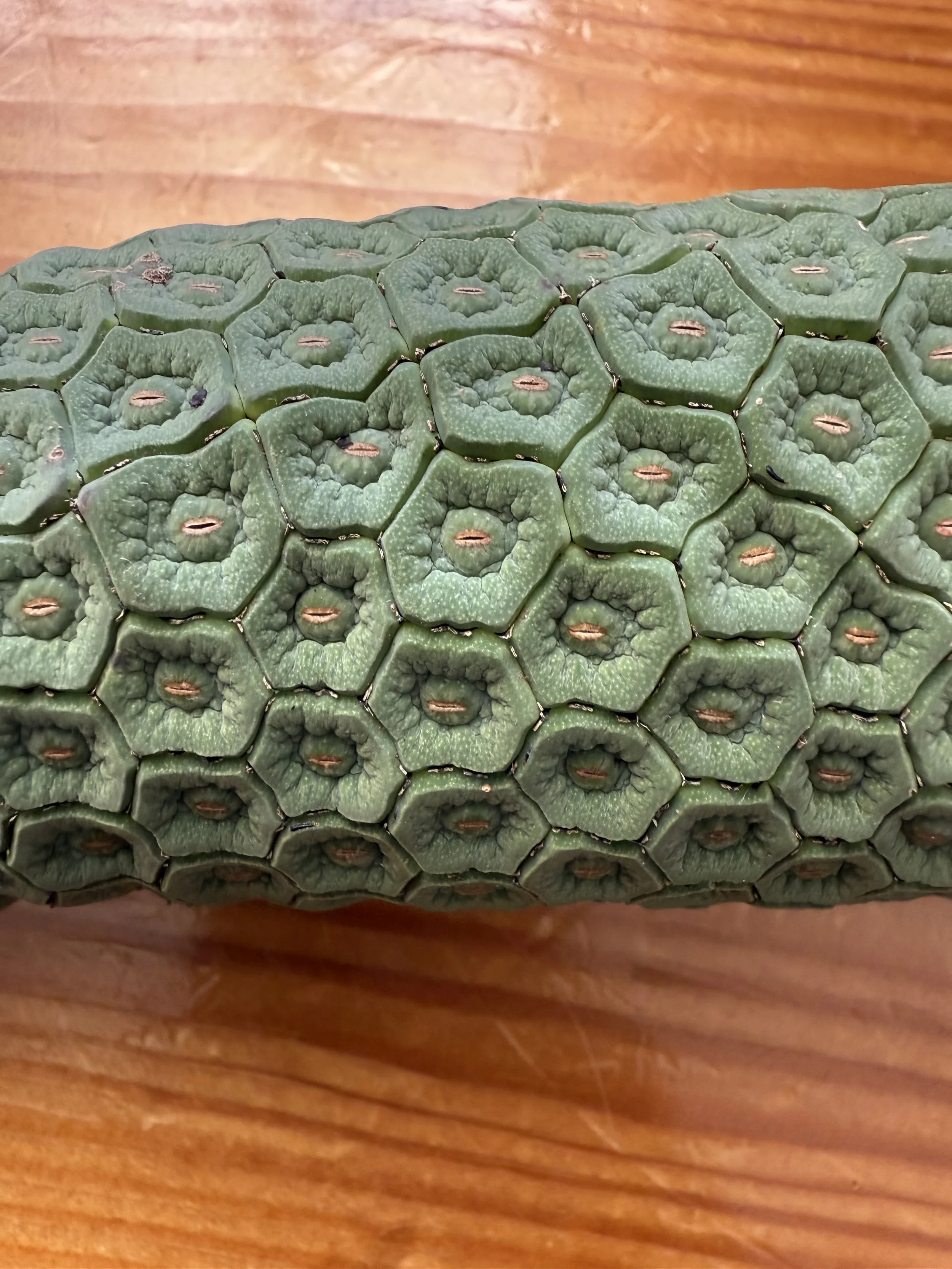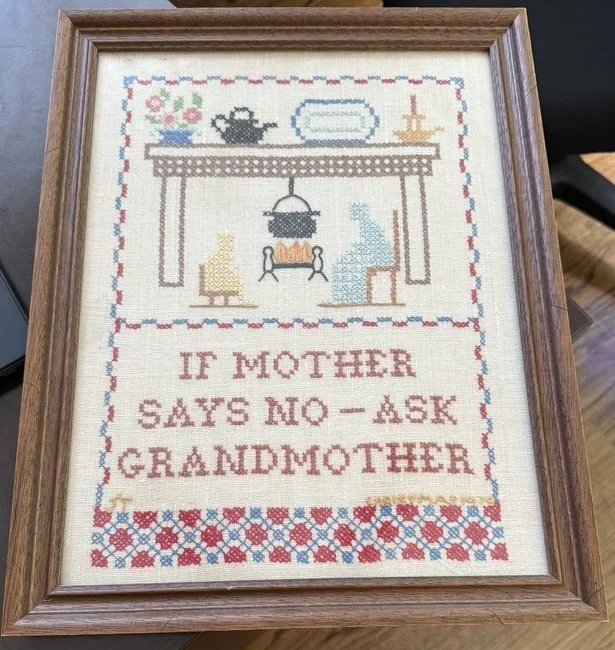The modern approach to improving our bidding structures (especially in competition) is to add transfers to our methods. This gives us more space and allows us to communicate more efficiently. When we play a system like McCabe, designed to give us more ways of raising partner and show support, we already have a useful structure. If we add transfers to this structure, we gain even more space for communication.
(605) Options for 1♦ - 2♣ 2/1 GF Auctions
The most complicated 2/1 GF auctions are the ones that start 1♦ – 2♣. Actually, these can be some of the most difficult auctions in all of bridge. These auctions can lead to lots of complexity and confusion about the meaning of bids on the 2nd and 3rd round of the bidding. Many pairs have played in 3-3 Major suit fits after the auction began with 1♦ - 2♣, thinking they were headed to a much better fit. Let’s look at what agreements we need to make with partner and then see how these affect our follow-up bidding.
(604) 2/1 GF – 2NT Rebid Showing a 6+card Suit
When we play the version of 2/1 GF that uses “2-Major Waiting” (meaning that Opener can rebid their suit without promising a 6th card), then we gain the ability to “right side” a NT contract when we have a balanced hand without a stopper in one of the suits. But, by having 2-Major be a waiting bid we make it harder for us to show our 6-card suit. Let’s see how we can add a gadget to help give us better rebid options to describe our hand.
(603) Opener’s Rebids After 2/1 GF Alternative Responses
When we choose to adopt the alternative approach to our 2/1 GF responses, “2♦ showing a 5+card suit, 2♣ being “could be short as 2 cards”, then this changes our reasonable options for rebids by the Opener. It is important that we have good agreements with partner about how this approach changes our rebid agreements. Let’s look at the hands that are simplified by these agreements and problems that are created.
(602) 2/1 Game Forcing Responses – Alternative Approach
There is not just one version of a 2/1 Game Forcing bidding system. There are a variety of conventional rebids that are additions to a fundamental 2/1 GF system, but there are also some fundamental response agreements that can be adjusted. One of these is the length that we promise when we respond in a minor suit at the 2-level. In the standard 2/1 system a 2♥ response shows at least a 5-card suit, a 2♦ response shows at least a 4-card suit, and 2♣ usually shows a 4+ card suit (occasionally it could be a 3-card suit). Let’s look at these responses in detail as well as an alternative response structure where we require 5 cards to bid 2♦ and then must use a 2♣ response with a large variety of hands.
(601) Transfer Lebensohl vs. Weak Jump Overcalls
Transfers are an extremely useful tool for competitive bidding. So are relay bids, like the way we use 2NT in a Lebensohl auction. We can play a useful system, like Transfer Lebensohl, in a variety of different situations. Let’s see how we can use these methods after partner opens the bidding and the opponents take away our bidding space with a Weak Jump Overcall.
(600) 1-minor Overcall Transfer Responses
When partner open the bidding with 1-minor and our RHO makes an overcall of a suit, then we need a way to describe our hand to partner. The traditional Responder tools are negative double and positive freebids, but in some auctions, there are other approaches that use transfers to give us a better way to compete as Responder. Unfortunately, we don’t have a transfer structure in every auction (when they overcall 1♠, we have very few good systems) but hopefully there will be more and more interesting development in this area of bidding theory.
(599) 1-minor (X) Transfers
When partner opens the bidding with a minor suit and right hand opponent makes a takeout double, the modern approach for many expert partnerships is to play transfer bids by the Responder. By Responder transferring to the suit with length instead of bidding it, we gain many advantages in these competitive bidding auctions. Let’s look at how we use these transfers by Responder and what they gain for us.
(598) 1-Major (X) Transfers
When partner opens the bidding with a Major suit and right hand opponent makes a takeout double, the modern approach for many expert partnerships is to play transfer bids by the Responder. By Responder transferring to the suit with length instead of bidding it, we gain many advantages in these competitive bidding auctions. Let’s look at how we use these transfers by Responder and what they gain for us.
(597) Transfer Advances Over Negative Double
When our LHO opens the bidding, partner makes a simple overcall, and Responder makes a Negative Double, then we in the position of the Advancer. We can choose to play Transfers in the position as well. By doing so, we give our selves an additional step and we often allow ourselves more ways to raise partner. These Transfer bids also cause some more difficulty for the opponents – making the meaning of their bids less clear. Let’s see how they work.
(596) Transfers Over Transfers
Responding to 1NT is a balancing act of showing both strength and shape while keeping the auction at a low enough level. With a game forcing hand (10+ points), the goal is usually to be able to describe our hand below 3NT, particularly with hands that are strong enough to be interested in slam. This is not a problem with relatively balanced hands, but with distributional hands it may be more difficult for Responder to show their shape and explore slam without getting the auction too high (going past 3NT). Transfer bids allow Responder to show their shape while using space efficiently. After making a transfer bid, Responder usually gets to make a second bid without the auction getting much higher - one of the most valuable parts of playing transfers. A way to further improve our use of bidding space is to play transfer bids not only on the first round of the bidding, but on the second round also after a Major-suit transfer. Let’s see how these Transfers Over Transfers work on Responder’s second bid after a Responder starts with a Jacoby Transfer.
(595) Transfer Wolff Over 2NT Rebids
Transfers have become a larger and larger part of both competitive and constructive bidding. These transfers help with playing the contract from correct side, but they are also effective in searching for a fit while keeping the auction at a low level. One auction where transfers by Responder can be helpful is after Opener has started with a suit opening bid at the 1-level (1X) and then made a jump rebid of 2NT – showing a balanced hand with 18-19 points. Let’s see how transfers by Responder in this auction can help our side describe our hands in the limited space below 3NT. This treatment replaces Modified Wolff Signoff after a 2NT rebid.
(594) Transfer Landy
There are two general categories of systems against the opponents 1NT opening bids – ones that use a Double as Penalty and others that use a Double as conventional. When the opponents open the bidding with a weak 1NT we need a good method for dealing with their unusual opening bid. The most common range for a weak NT is 12-14 points, but we define 1NT to be weak if the range does not contain 16 points. Some examples: 10-12, 11-13, 11-14, 12-14, 12-15, or 13-15 points. Against these opening bids we use a system that has a penalty double. Let’s look at one fo the most interesting of these sysetm, Landy with Transfer bids.
(593) Todd Busts over 2C Opening Bids
When our side opens the bidding 2♣, we need an agreement about how we handle our responses. There are a variety of ways to handle this -- 2♦ waiting, Steps, Controls, 2♥ Bust. People have strong opinions about 2♥ for showing a bust. The players who dislike it are worried about “wrong siding” a ♥ contract. The players who like it like knowing that 2♦ is game forcing, determining if we are going to game or not immediately.
(592) Responder's Unusual 2-Major Jump Shifts and NT Bids
When partner opens the bidding 1-minor (1m), a jump shift to 2-Major (2M) by Responder can be used for a variety of different hand types. Both the standard approach of a strong jump shift and the common approach of a weak jump shift leave a lot to be desired. The modern style is for good hands to go slow, which makes a strong jump shift less appealing because it eats up valuable bidding space. With players responding to a 1m opening bid with 1M more and more aggressively, this makes using a weak jump shift less common even if it is our agreement. For these reasons many experienced partnerships choose to use these jumps to 2M for other constructive bidding purposes. Let’s look at uses of these jump shifts that can help us with some problem hands for Responder.
(591) Inverted Minors and 1D-2C Auctions with Structure
When we use Inverted Minors to raise partner’s suit, the traditional approach is to show Major suit stoppers and determine whether we can play a notrump contract. A more sophisticated approach is to use an artificial structure that allows Opener to show their hand type and strength and allow Responder to determine where to play the final contract (and who should be declarer in notrump). A similar approach to this structure can be used in 1♦ – 2♣ auctions as well. Let’s look at some of these methods in detail.
(590) Reverse Flannery
Another approach for using 2♥ and 2♠ responses to 1-minor suit opening bids is to use these bids to show a variety of problematic hands that have length in both Major suits. This method, called Reverse Flannery, is particularly effective after a 1♦ opening bid. It originally comes from Precision where 1♦ is the only “natural” 1-minor opening bid. Let’s look at how this works and see what types of hands these agreements can help us bid better.
(589) Responder's Systems After a 1NT Overcall
When partner opens the bidding in a suit at the 1-level and the next player overcalls 1NT, we want to have a system that allows us to deal with this interference effectively. With a good hand (which is somewhat rare in this auction), we make a penalty double. With a poor hand that is relatively balanced, we likely want to stay out of the auction and simply pass. It is the distributional hands with some values, but less than 10 HCP, where we are likely to want to compete in the bidding. One way to make it easier to bid with these distributional hands is to use a system similar to what we do when the opponents open 1NT. Let’s look at what systems we should use in these auctions and how our system varies based on which suit partner opened.
(588) Kokish Game Tries
When we find a Major suit fit and we are interested in game (specifically in the auction 1M – 2M), we want to have a good way to explore or invite game. The traditional way to do this is to ask for help in a side suit, using a Help Suit Game Try, HSGT. We additionally have 2NT available to make a general try for game (some play it as trump suit GT) and a raise to 3-Major to mean 1-2-3 Stop (or generally quantitative/general GT.) This structure is reasonably effective in exploring game. But it has two significant downsides:
(587) XYZ
When the auction begins 1X – 1Y – 1NT (where X and Y are different suit bids), the modern treatment is to play Two-Way New Minor Forcing. This approach uses both 2♣* and 2♦* as artificial and forcing bids by Responder. 2♦* is an artificial game forcing bid, while 2♣* is generally used to start invitational bidding sequences.




















